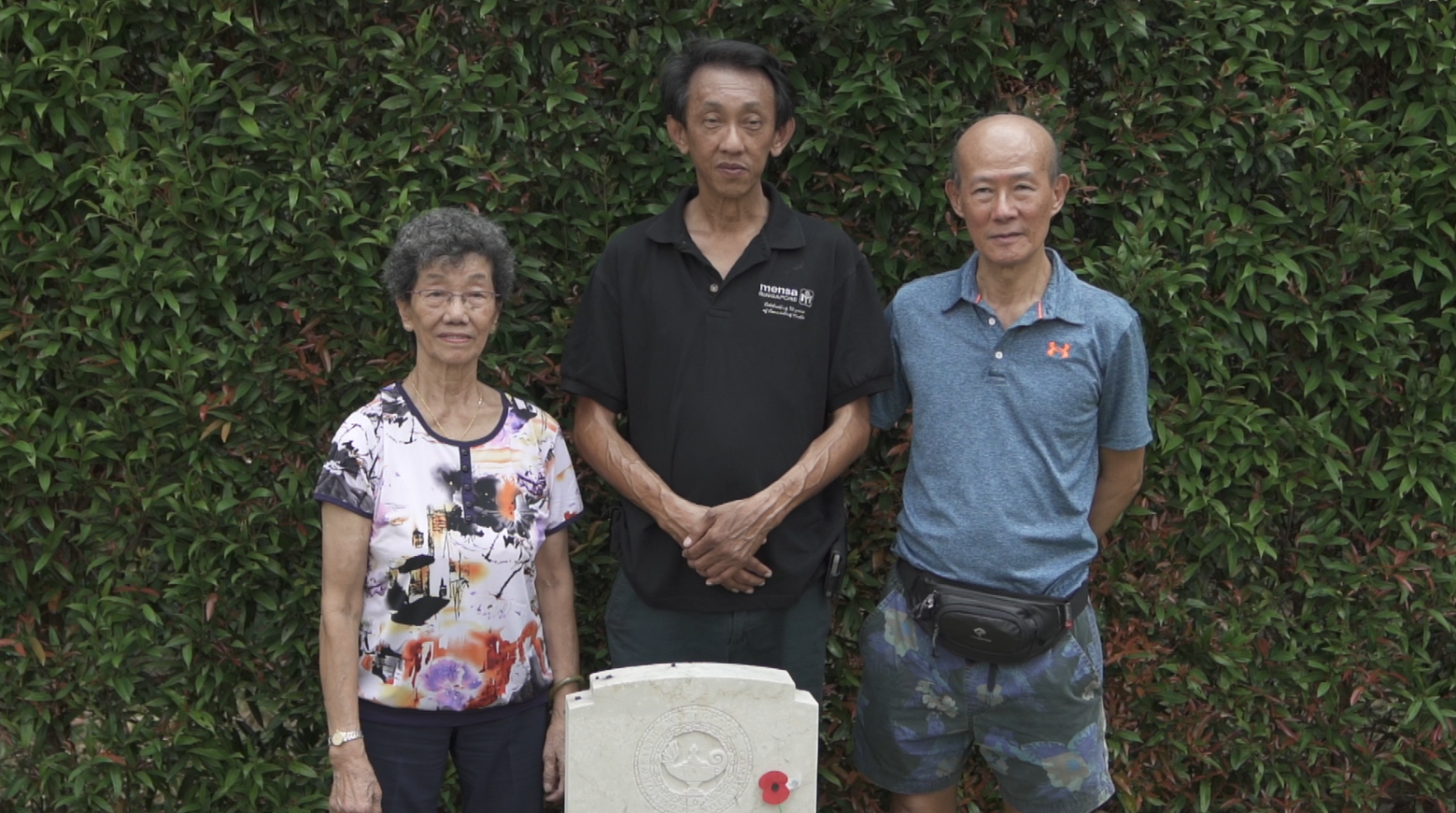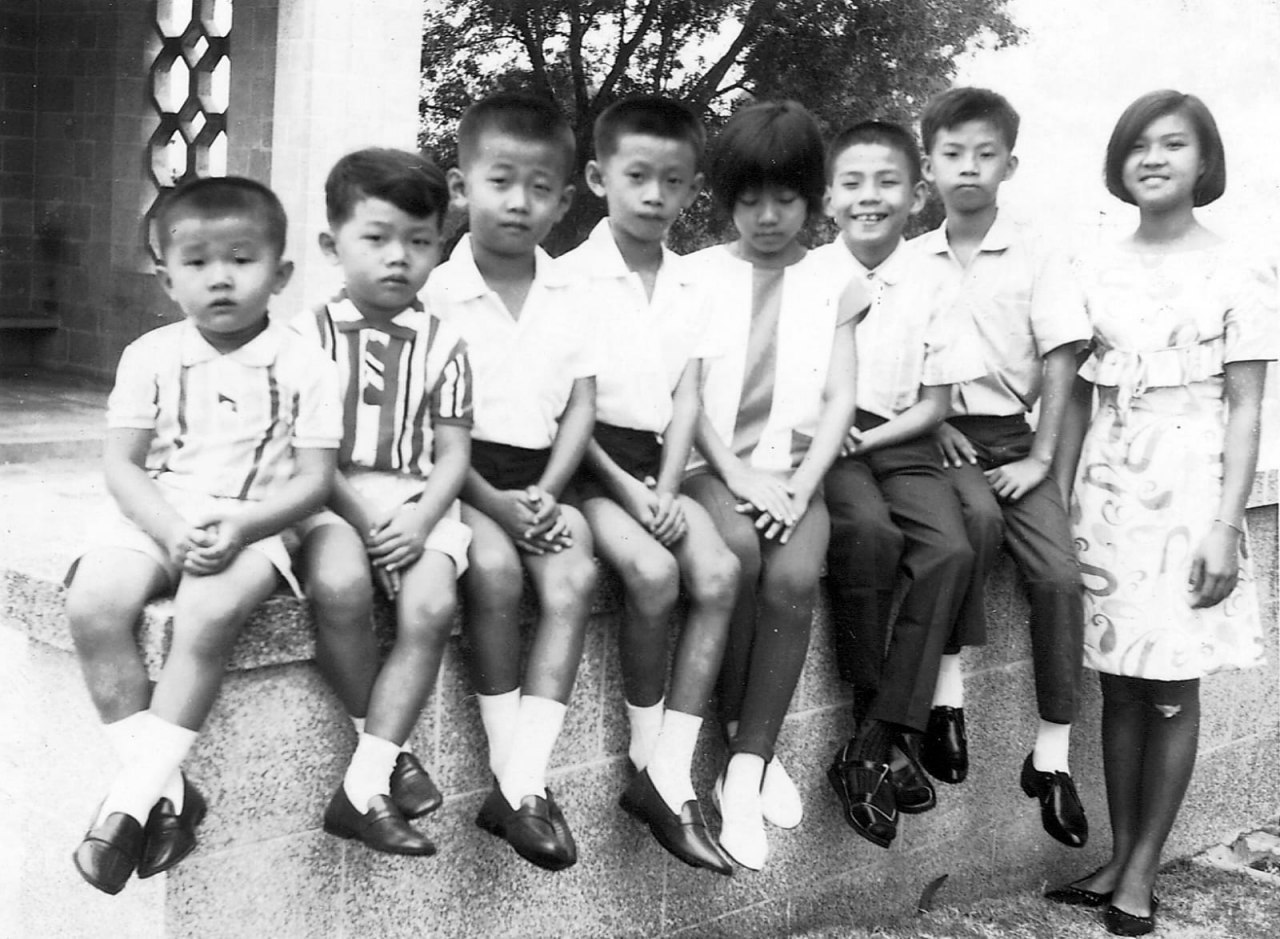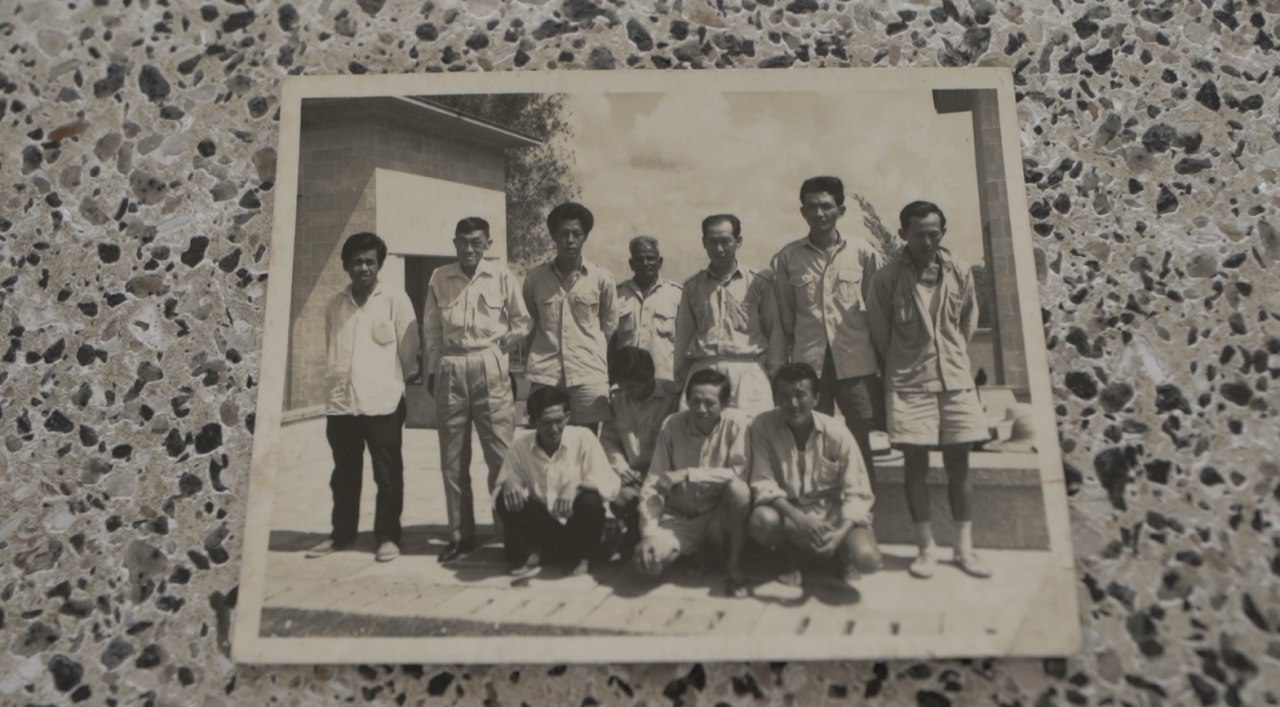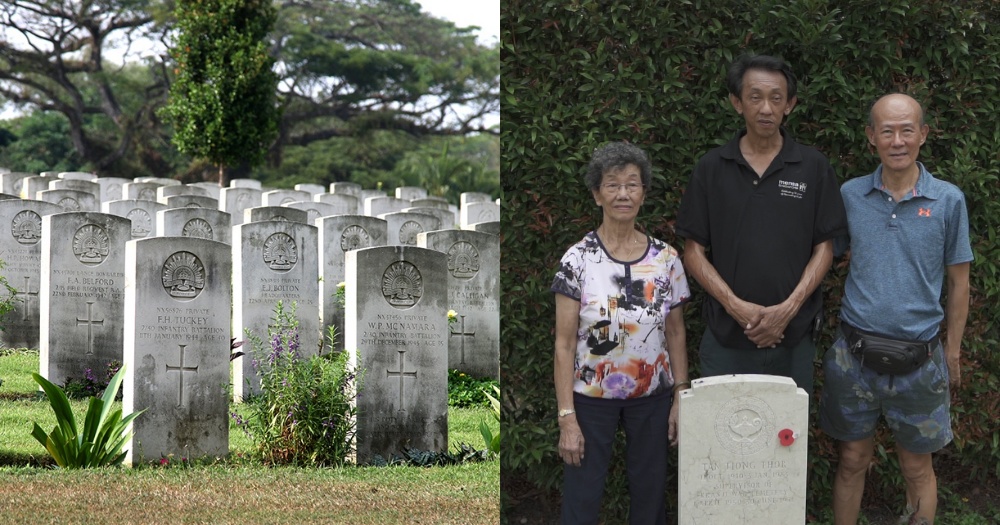Tucked between Woodlands Road and Turf Club Avenue, the Kranji War Cemetery seems to exist in a bubble quite detached from reality.
Originally a small cemetery set up by prisoners of war during the Japanese Occupation, it was developed into a permanent war cemetery by the Army Graves Services after the British reoccupied Singapore.
 The Kranji War Cemetery contains the remains of more than 4,400 soldiers who died in the Second World War. Image by Joshua Lee
The Kranji War Cemetery contains the remains of more than 4,400 soldiers who died in the Second World War. Image by Joshua Lee
Its serenity is mirrored in the silent rows of tombstones weathered grey over time, laid out with almost regimental precision.
These tombstones used to be pristine white, sighs 80-year-old Ang Tee Hui, a gardener who lived and worked on the cemetery grounds from 1968 to 1985.
In those days, a team of gardeners would fan out to inspect, clean and weed every tombstone.
There's a particular method to cutting the wild grass that surround the tombstones, says Ang.
"Your knife must be sharp and you need to cut the grass at an angle. So when it grows, it grows outwards," she says in Mandarin.
Ang's father-in-law, Tan Tiong Thor, was Kranji War Cemetery's first supervisor. Tan lived on the cemetery grounds in a big house, together with his three sons and their families.
 Ang Tee Hui (left) worked and lived in the cemetery as a gardener from 1968 to 1985. She is pictured with her son Edward Tan (middle), and her nephew Stevie Soh (right). Image credit: Ilene Fong
Ang Tee Hui (left) worked and lived in the cemetery as a gardener from 1968 to 1985. She is pictured with her son Edward Tan (middle), and her nephew Stevie Soh (right). Image credit: Ilene Fong
After Ang married into the Tan family and gave birth to six children (two daughters and four sons), she started working on the cemetery grounds as a gardener.
Being a gardener and a mother was tough work.
A typical day started at 6am and stretched for more than 12 hours. She had to make breakfast for her children, before her husband sent them off to school.
Then, she had to do her household chores, before heading to work at 8am.
"I would come here to work from 8am until 10am. Then, I will go back to drink coffee. At 10.30am, I would come here to work again until 12pm, that's when I ended work. I would then go home. Then I would have to work again at 1pm. Save for a 3pm coffee break, my work would stretch until 5pm."
But perhaps what was more taxing was the monotony of tending to the rows and rows of tombstones.
"It was cutting, weeding, cleaning -- pluck, pluck, pluck, cut, cut, cut -- we did this until the end of the row and then redid the entire process again."
 Image by Joshua Lee
Image by Joshua Lee
Living, sleeping in a cemetery
One would imagine that life in a cemetery would present many opportunities for supernatural encounters -- especially so for one filled with the remains of soldiers who probably died violent deaths.
In fact, Ang's father-in-law once told the Malaya Tribune in 1950 that he had encountered over a hundred ghosts during his time there.
He told the paper:
"It happened at midnight when I (was) on my rounds to see if the two night watchmen were not sleeping. When I approached the ghostly figure and shone my torch on it, it disappeared, just like that."
And while Ang had never encountered ghosts in the cemetery ("We're so busy, there was no time to feel scared!"), her son, 60-year-old Edward Tan claims that he used to hear footsteps outside their house in the middle of the night.
Far from being a frightening place, the cemetery was actually a playground of sorts, Edward says, filled with various trees -- pineapple, papaya, durian, rambutan -- grown by the family.
In some ways, it was rather idyllic setting -- peaceful enough to sleep in, according to Edward.
"I've spent nights in the cemetery itself when I was young, I have slept here right there," he laughs.
"It really is a very peaceful place," nods Edward's 69-year-old cousin, Stevie Soh.
 The children in the Tan family, growing up. Image credit: Ilene Fong
The children in the Tan family, growing up. Image credit: Ilene Fong
What Soh remembers, very vividly as well, was the number of bodies brought in to the cemetery.
Over the years post-Japanese Occupation, the remains of soldiers and prisoners of war were brought over from Changi, Bidadari, and even French Indo-China to be buried at Kranji.
"Those with tombstones, definitely there are some parts of their bodies that are intact.... As a young kid, I saw they bought this stuff here with bones and helmets before they put them into the ground."
Some, says Soh, had rotted until all that was left were bones, boots, and helmets.
 A group of gardeners who worked for Tan to maintain the cemetery. Image credit: Ilene Fong
A group of gardeners who worked for Tan to maintain the cemetery. Image credit: Ilene Fong
On the work front, Tan was a supervisor who was well-liked by his men.
Ang remembers him as a boss who treated his workers well and always helped them when they met with trouble.
His workers were like his kampong friends, says Soh, who came to him when they needed a job, especially after the war.
"If they can’t find a job and we got an opening, he would hire them to help look after the cemetery." he says.
Moving away from the cemetery
Tan passed away in 1983 but not before he passed the supervisor role to Soh's father. Unfortunately, Soh did not take over the job.
"I would have had to wait for my father to retire, and it would have taken too long. Well, I manage to find a decent job," he says.
To acknowledge his work, and possibly his contributions during the war (Tan risked his life to smuggle food and money to Allied prisoners-of-war during the Japanese Occupation), the Commonwealth War Graves Commission allowed for his burial in Kranji.
Today, his tombstone sits in a quiet corner of the cemetery.
 Tan's tombstone. It is adorned with a poppy flower. Image credit: Ilene Fong
Tan's tombstone. It is adorned with a poppy flower. Image credit: Ilene Fong
Eventually, the extended family gradually moved out of the cemetery into HDB flats.
For Ang, the place holds sad memories. In 1985, her husband passed on suddenly in the course of work.
"It was heart disease," she says quietly, the events of that day playing out in her mind.
"He was cutting the grass. His watch had spoiled that day. Around nine plus, he walked past me and asked for the time. I told him nine plus. He walked over there and then someone ran over to tell me that he fainted. When I ran to him, he was already gone."
She later found work at a factory and eventually retired to take care of her granddaughter.
But every now and then, Ang would think back about the house in the cemetery, the idyllic life, and the sheer abundance of everything.
"Over here you have pineapple, want to eat corn, and even sugar cane, and jackfruit, everything is here. If I want coconut to cook curry, I just need to pluck and grind it; don't need money."
"Now, a little bit also need to fork out money," she laughs.
"I didn't miss it very much when I moved out," Soh quips. It was the freedom after years of living with a big family that he relished.
"After many years, we miss it," he says. "We now miss already. Because it is getting crowded everywhere."
The family now visits the cemetery every year during Qing Ming to pay their respects to Tan, and reminisce about the old days.
The family house has now been converted into an office for a privately-contracted supervisor. The garden, once filled with papaya trees, durian trees, and rambutan trees, is now an empty plot of grass.
But aside from that, time has stood still in the cemetery.
"Nothing much has changed, actually," says Edward.
Soh nods, a little wistfully.
"Yea, everything remained the same."
Stories of Us is a series about ordinary people doing extraordinary things. Be it breaking away from conventions, pursuing an atypical passion, or making the world a better place in their own small way, these stories remind us both of our individual uniqueness and our collective humanity.
Top images by Joshua Lee and courtesy of Ang Tee Hui.
If you like what you read, follow us on Facebook, Instagram, Twitter and Telegram to get the latest updates.
